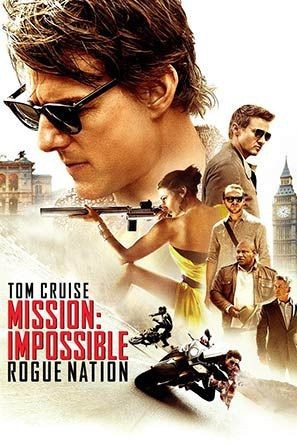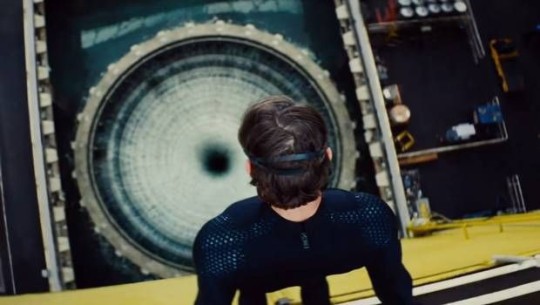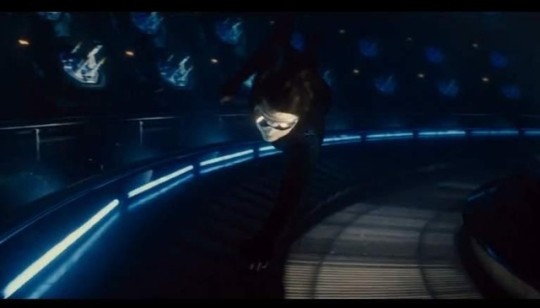#technicalfeatures
Explore tagged Tumblr posts
Text
Technical Features of WorksWare ERP
Engines of growth for business Contact mail id : [email protected] Call us : +1.833.561.3093

#atlantis#technicalfeatures#growthforbusiness#workswareerp#businessexpansion#companygrowth#organicgrowthbusiness#erpsoftware#erpsystem#saperpsystem#erpsolutions#clouderp#erpcrm#enterpriseresourceplanningsystem#erponline#erpapplication#saperpsoftware#erpsaas#erpecommerce#erptechnology#erpmanagement#clouderpsolutions#erpit#erpplanning#atlantiserp#erpsoftwaresolutions
2 notes
·
View notes
Text
Mission Impossible: Rogue Nation
Lights, Camera, Action: A Technical Look at Movies
Movie Scene Used: https://youtu.be/D4Okmzct4K0
The features I am analyzing are the use of camera angling and camera focusing. The scene I am applying both of these features to specifically is the Water Torus scene in Mission Impossible: Rogue Nation.
The first instance of camera angling I spotted Ethan’s viewing of the Water Torus initially. The audience sees it from a bird’s eye view, and thus, we are able to see straight down into this seemingly endless and tornado swirling pit of rushing water. From this angle, we get a sense of thrill, danger, and maybe even fear, because we realize it is our hero who has to go into this for 3 minutes. The scene switches back and forth between Benji entering the elevator, a calmer and none immediate dangerous situation, and Ethan’s evaluation of his situation. The camera’s redirection of tension effectively shifts the audience’s immediate fear for what will happen to Ethan to a more rising fear about what will happen to Benji.
After Ethan’s jump, we are brought back to Benji exiting the elevator, where the camera pans to the security camera watching his movements intently, and then to him approaching the security doors. The camera’s attention shifting between him standing at the door and allowing his mechanism to work and the security camera adds a bit of tension to the scene. The audience can feel his “fear” in the scene because it like he is unsure and constantly checking to see if he has been caught.
We are then swept to Ethan in the tunnel, traveling straight down at an intense speed. The camera view widens to capture the entire room and Ethan floating around it. This shows the audience the space he is currently in, the lighting from the machine, the spinning arms that may or may not become important to the plot later, and the turbulent water Ethan is spinning in and swimming against for these 3 minutes. The audience is then following Ethan again as the machine shuts down and he continues his mission without hesitation. The camera pans over to the specific lever - 108 - he is looking for.
We getting a typically wide view of Ethan and a bit of the background. In a sense, the camera is short-sighting or putting the frame in the opposite direction of where the action is taking place. The frame looks almost even, but with the space behind Ethan being presented, the audience can tell it was left there for a purpose. The camera closes in on Ethan after the arm of the machine has passed. He has acknowledged the machine is still on and swinging, but the camera is mirroring his focus. He is more concerned with the lever and completing his mission, so the camera is focusing specifically on him and not his surroundings. This is dangerous. As Ethan’s attention is solely on retrieving and replacing the cards, the camera zooms in completely to him doing this activity, and we, the audience, are blinded by what’s happening to the right (in front of him) and the left (behind him). This tightening of the frame on Ethan adds to the shock and surprise when Ethan is hit by the arm “suddenly” and he is knocked from his position.
When the cards are knocked from Ethan’s hand, we follow them instead of Ethan. This adds the feeling of “oh no!” because we watch as they float aimlessly in the water, switching back and forth between each other, as if in taunting. How will Ethan know which one is the correct one now?
The scene jumps to Benji’s watch and then the look on his face. He is oblivious to what has happened and he can only hope Ethan comes through. The audience is aware of the situation and we are left feeling even more panicked and concerned by the turn of events. The screen then switches to the tech guys fixing the machine and then Ilsa’s confused and shocked face. The screens read all red and state that the hatch is secured and that Ethan has yet to complete his mission. The camera directed at below her face as she stares into the Water Torus adds depth to her worry and this feeling of “I’m too far away to know what’s happening and to help.”
We are brought back to Ethan’s part of the mission with the angle of the two cards again. Ethan appears to be far in the background. The camera swims smoothly to Ethan and we are given a side view of him struggling against the current, the cards at arm’s length away, and the light of the machine directly below his face. The contrast of him and the room surrounding him is distinct, almost as if highlighting the fact that we should be paying attention to specifically him.
The frame zooms in completely over his body and to his reaching arm, displaying in bright red and white his time is up and his oxygen is almost completely depleted. This camera view compliments Ethan’s already dangerous situation by sprinkling a bit of urgency to make it seem almost hopeless. To make matters worse, the last card is swept away in the current, and rather than follow Ethan on his journey to grab the card in rushing water, we are left on the opposite side as we pan upwards and watch as both the card and Ethan come back to us. We feel like we can reach out and grab the card as its come toward us.
The camera goes still as Ethan grabs the card and then it follows and stops with him as he stays planted to the wall, 3 levers away from his target. We come back to the bird’s eye view of the working Water Torus, then a zoom in shot of Ethan’s current oxygen level, which is depleting fast from 10%. The camera focuses on the secured hatch notification on Ilsa’s tablet and then her panicked face. The movement of the camera over these vital pieces of information support her worry, confusion, panic, and desperation.
Back on Benji’s side, we see his device successfully opening another door and the look of apprehension on his features. The audience might have forgotten in the tension it was experiencing watching Ethan struggle, but if Ethan fails, Benji will instantly lose his life. The cameraman did an excellent job of dividing the audience’s attention between the three different elements of this mission because each one works in sequence with the others, so if one fails, they all fail. That realization underlines the real tension in each of these scenes and with each other the specific camera angles. The perspective goes from Benji’s face to his back as he walks past the security guards and over to the last door. This is the moment of truth, and we have yet to hear back from Ethan’s side of the deal. The camera angle changes quickly to three focal points; a full view of Benji at the entrance, the guards seated at their computer in the background, to finally two quick shots of the security cameras in the background on either of Benji’s head in the foreground. These different perspectives just at to the feeling of being watched all the way around as Benji is. One slip up, and there is no way it will not be caught.
The scene changes from Benji’s paused position at the door with super sensitive cameras ready to size him up to Ethan finally reaching the latch with the two cards. In his reach, we are able to see his lack of oxygen is making his focus waver - a detrimental mistake that could cost Benji his life. Quickly, Benji’s zoomed in expression of trepidation and his body moving forward are on screen again. The security guards are then shown analyzing their computers to see if he is an imposter or not. A super zoomed in shot of Ethan deciding on a card and plunging it into the slot immediately follows. These scenes are all happening in time with each other, instead of sequentially like before. Benji is continuing his walk, then the screens finally say he is authorized, and Benji concludes his walk to the door with no problem. The door opens, he exits, and the lights shut off instantly. The cameraman’s decision to keep the attention on Benji’s scenes and his access to the door is a way to acknowledge that one part of the mission is complete, Ethan did half of his job, and now the hardest part of the mission is now in fruition.
Ethan releases the latch and the audience watches from a widescreen as he currents to the other side of the machine. We zoom in to the door latch that he needs to escape, watch as he seemingly misses the shot, but pan over to realize he is clawing at the wall and pulling himself toward the exit. From this angle, again, we can only see what is happening directly to Ethan, nothing before him and nothing coming. This leaves us blinded-spotted and unable to know if he should duck or something - a dangerous position to be in if you have things swinging inches from your body. Ethan grabs hold onto the exit latch, struggling to open it. We see this from behind his back because our entire focus is making sure he opens the door.
The camera adjusts slowly to his right side, and the audience is able to see the arm of the machine as it nearly hits him. The fact that it is shown suggests that it is no longer the major antagonist anymore. The main problem, now that he has learned to be vigilant, is getting the door open. The camera pans away from the door hatch to specifically Ethan’s face. From this view, though only for a short second, we see the consciousness escape from his eyes as his last ounce of strength is pushed into opening the latch. We are then pulled away from his face to his hands on the latch and the oxygen indicator flashing zero. We take on the perspective of Ethan at this point. Our body is unable to move in the way we want, we have no strength in our hands and feet, and the situation seems hopeless. We float aimlessly in the current, watching as the door gets further and further away. Where Ethan has been left for dead, Benji is successfully infiltrating the computer system, aware of his friend’s sacrifice to save his life.
Back inside the Water Torus, Ethan’s body is floating about until it reaches us and we see the sudden appearance of another body. The frame is wide as we watch Ethan and focuses ever so slightly on his body as he gets closer to the camera and then the image is zoomed in too much for the audience to analyze whose body it was that showed up. We then follow this body holding Ethan’s around the water until Ilsa’s face is shown and the shot focuses on her hand reaching out to grab the approaching door latch. The angle of the camera is inconsistent when she misses, paralleling the movement of their bodies as she adjusts them upright. The lighting is hitting all parts of their body at an inconsistent rate to reflect the same message as the camera’s lack of angle. The frame settles as Ilsa finds the upright position and is able to grab at the door handle. The lighting is directly below them, highlighting the face of Ilsa. Ethan’s limp body remains out of focus to resemble the idea that he is probably half past dead at this point. The opening of the latch leaves us there as the two are swallowed up and bubbles swarm the screen.
The cameraman and cinematography experts of this movie did a great job in enticing certain emotions through lighting, camera angle, specific focus, and frame size. The feeling of tension was enhanced immensely because of the perspective the audience was able and unable to see. Sometimes we were omniscient, others we were at the mercy of the character and had to brace ourselves for the whatever it is he or she could or could not see. Had the movie been in 3D, there would have been even more effects to underline and talk about. A movie simply isn’t a movie without lights, the camera, and the effects that make the action.



#rhetoricalanalysis#lights#camera#action#technicalfeatures#missionimpossible#roguenation#watertorus#actionanddanger#cinematography
1 note
·
View note
Text
Adopting a factor-investing strategy for a little extra return
Factor investing straddles the space in between actively managedportfolios, where stocks are picked based on fundamental or technicalfeatures, and index-tracking passive investing, taking on some of thecharacteristics of both
0 notes
Text
About

New ‘professional’ website launched with loads of revolutionary design and technicalfeatures, many of which are now common place. Easy navigation, top quality photos and‘expert written’ product descriptions were fundamentals which remain with us today. Wemoved to bigger premises – but we were not there for long! We moved into a brand new warehouse, with new offices and a new revolutionary concept in retailing – a ‘riders lounge’style cyber shop – where you can buy online but look at and touch the gear as well. This way,we can offer a larger choice than any high street shop!
0 notes